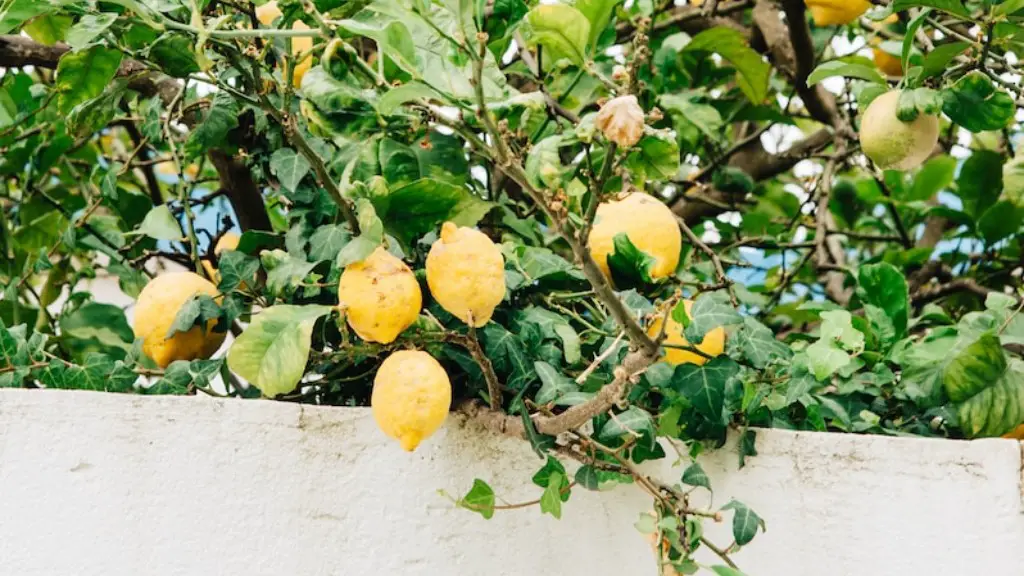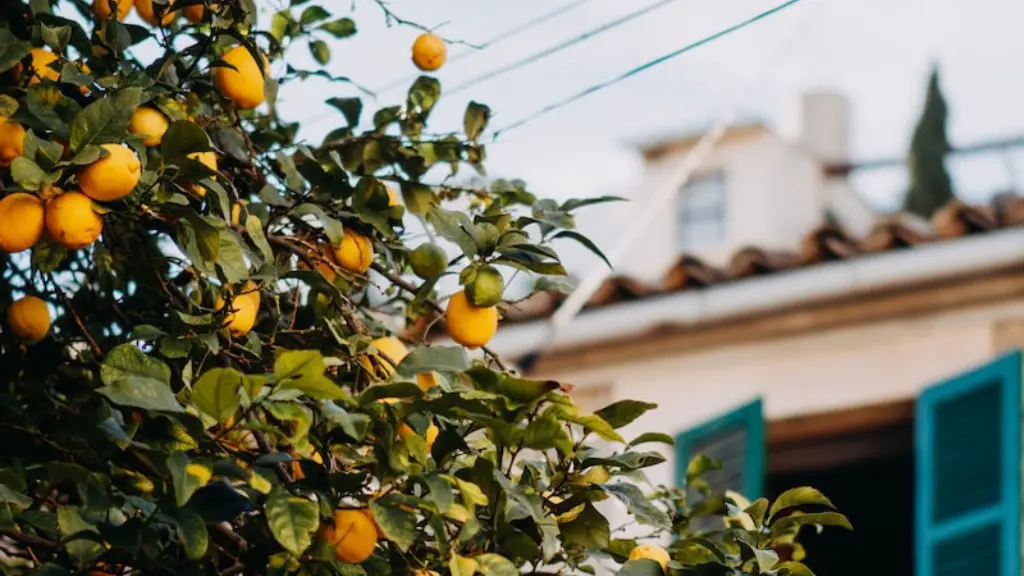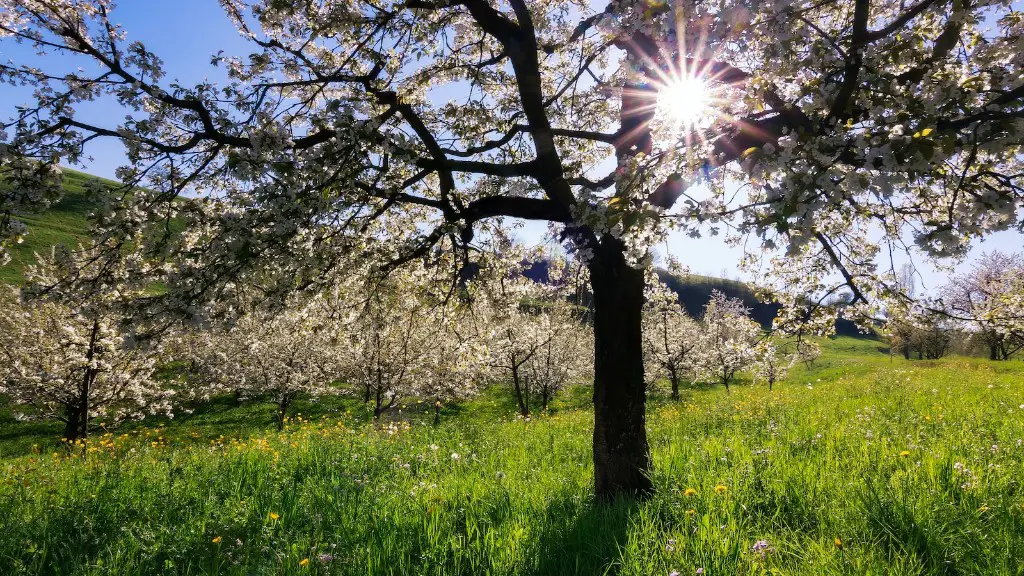Growing a dwarf lemon tree from seeds is a great way to add a pop of citrus to your property. To ensure your seedlings become beautiful, vibrant trees that produce luscious fruit, a few simple steps are necessary. Whether you’re a gardener, an nature lover, or just looking for a fun project to do with your family, follow these steps and you’ll be the proud grower of some delicious fruit.
First, you’ll need to procure your seeds. You can get them at gardening stores, or online. The seeds should look yellow and plump. Try to get a variety that’s specifically labeled as dwarf lemon, which is normally quite small. These smaller varieties are perfect for growing in pots or in any modest sized outdoor space.
Once you’ve got your seeds, you can begin the germination process. Start by filling a shallow pot or tray with damp potting mix, or regular soil. Place the seeds no more than one inch beneath the surface of the soil, lightly pressing them into the mix. Water them until the soil is damp all the way through, and then cover the pot with plastic. Place the pot in a sunny spot at temperatures between 65- 70 °F, and in a few days you should start to see sprouts.
When the seedlings are about 1 to 2 inches tall, you can transplant them into larger individual pots. Fill the pot with a mixture of good quality potting soil and compost. Make a hole for each seedling, and place the seedling in individual pots. Be sure not to disturb the roots, and water them gently. Check the pots regularly, and when the soil is starting to dry, give your plants another soak.
Now that you’ve got your seedlings in their individual pots, it’s time to turn your attention to the environment and the growing conditions of your new trees. Dwarf lemon trees thrive best in sunny environments, with temperatures between 65-75°F. They can tolerate slightly lower temperatures, but any lower than 45°F for a sustained period of time can cause damage. If you’re growing in a container, be sure to move it indoors during cold nights.
The most important part of growing a dwarf lemon tree is to fertilize it regularly. Since the soil is contained within the pot, it can quickly become depleted of essential nutrients. You can use citrus fertilizer or purchase a fertilizer specifically designed for citrus plants. Depending on the region, you may need to fertilize your tree 2-3 times a year. Always read the instructions on the label and follow the appropriate dosages.
Additional Tips For Growing Havestable Lemons
Dwarf lemons are truly happy, if they have six or more hours of sun a day. Place the containers in the sunniest spot in the garden, balcony, or terrace during the day, and wherever the temperatures letting you at night. If the container isn’t large enough for the root system, even if you regularly prune the upper parts, the dwarf lemon won’t blossom and won’t give any fruit.
The move of the containers during the day from shade to sun may be helpful, too, but if you need to do that quite often, you aren’t in an optimal location for a lemon tree. Another good rule of thumb for your dwarf lemon tree is to keep it away from strong winds. Even at a young age, high winds can cause damage and stress to the tender branches and leaves.
The soil you choose should be well draining, so it doesn’t stay soggy and cause fungal diseases. You can mix your own soil to achieve the perfect balance of drainage and retention. For a dwarf lemon tree, mix one part potting soil, one part compost and one part sand or perlite. This allows the soil to retain some moisture, while allowing excess water to drain away as needed. You should also check the pH level of your soil to make sure it’s slightly acidic, but not extremely acidic requirements for growing a dwarf lemon tree.
Providing the proper amount of water is another important part of the care process. Dwarf lemons require regular watering, but it’s important not to overwater. The soil should be moist, but not soaking. A great way to ensure that the soil is receiving the proper amount of water is to use a soil moisture meter. This device can help you make sure your tree is getting just the right amount of water.
It’s important to remember that dwarf lemon trees are somewhat susceptible to pests and disease, so it’s advised to routinely inspect your tree for signs of trouble. Regularly inspect the underside of the leaves, the trunk, and the soil surrounding the tree. Address any issues you find immediately. Fortunately, with the right care and attention, you should be able to maintain a healthy and vibrant dwarf lemon tree.
Ideal Temperature Requirements
The optimal temperatures for a dwarf lemon tree is between 65 and 75 degrees Fahrenheit (18 to 24 degrees Celsius) at night and 70 to 83 degrees Fahrenheit (21 to 28 degrees Celsius) during the day. Generally, if the outside temperature drops below 45 degrees Fahrenheit at night for any sustained period, extra protection should be provided. For example, covering the lemon tree in a light fabric or blankets. Artificial light may be needed if a tree is wintered inside. This is especially true of trees in containers that don’t provide adequate insulation for cold outside temperatures.
It’s important to let a lemon tree acclimate slowly when it’s moved from indoors to outside. This helps avoid damage from rapid temperature change. Generally, the process takes 30 days or so, with the first few days spent moving the tree to a shadier part of the garden. Each successive day, move it closer to its final resting spot, allowing it to adjust gradually to the natural elements.
Although a young lemon tree isn’t as hardy as an adult, it should be strong enough to withstand temperatures as low as 18 degrees Fahrenheit. To help it survive, you can provide additional protection, such as mulch, winter fabric, and potted lemon tree covers. You can also employ the ‘onion method,’ which entails encasing the tree in a cylindrical wrapping made from several layers of newspapers.
In addition to providing your dwarf lemon tree with a suitable environment, feeding it the right nutrients is also important for its growth. Generally, citrus plants are hungry for nitrogen, so we recommend adding monthly applications of a slow-release fertilizer specifically designed for citrus plants.
Harvesting The Fruits Of Your Work
With the right care, you can expect to pick your first crop in the third year of growth, and have a full harvest in the fourth. Once the fruits are ripe, which is usually in the fall, you can pick them from the tree. To test for ripeness, check the color of the fruit. When a lemon tree has finished flowering and fruiting, it’s best to prune it back, as this will help promote new foliage and future flowering.
It’s a good idea to further season and ripen the fruits, by leaving them on your counter for a few more days at room temperature. This will ensure that the lemons are perfectly soft and juicy. Once they’re ripe, you can use them to garnish drinks and dishes, or even make a delicious lemonade.
Don’t forget to save some of the seeds, so you can keep the cycle going! Growers can store lemon seeds for up to 5 years before they need to be replaced, so you can easily replenish your lemon tree in the future.
Tips For Growing Dwarf Lemon Tree Indoors
It’s entirely possible to grow a dwarf lemon tree indoors, although the tree won’t get as big or produce as much fruit as an outdoor tree. In order to succeed, you’ll need to provide the necessary light, temperature, and humidity for your tree. Place it near a bright, sunny window that faces south, east, or west. If the sun isn’t hitting the leaves of your tree, a supplemental grow light can provide the necessary illumination.
In addition to ample sunshine, your tree will need properly humidified air. Place a tray of pebbles nearby and fill it with water, so that the evaporated moisture in the air can reach the leaves. Make sure to check the water in the tray regularly, as the pebbles will dry out quickly. Once the water evaporates, simply add more and watch the moisture levels rise.
Once your tree is in its indoor environment, be sure to inspect it regularly. Dwarf lemon trees are prone to attack from pests and fungal diseases, so keeping an eye out for signs of trouble is key. You can easily treat the tree with natural pest control formulas or fungal sprays if necessary.
Helpful Disease Prevention Tips
When growing lemon trees, it’s important to take preventive measures to ensure that your tree stays healthy and happy. This includes avoiding planting in overly moist soils, as these can lead to disease, as well as avoiding high nitrogen fertilizers. High nitrogen fertilizers can burn the tree’s delicate roots and affect its growth rate.
Another important step is to regularly prune and inspect the tree for signs of trouble. This helps keep the tree in good shape, and also helps it to stay productive and healthy. Also, don’t forget to check for pests, as a large infestation can quickly overwhelm a tree. Be sure to address any issues ASAP, in order to keep your tree in great shape.
Finally, if you’re growing your lemon tree in a pot, blending in slow-release fertilizer helps maintain a steady supply of nutrients over the long term. You can also add mulch to the bottom of the pot, which helps keep the roots cool and moist in the summertime.





